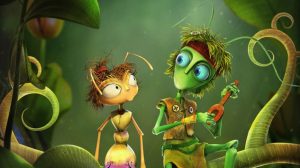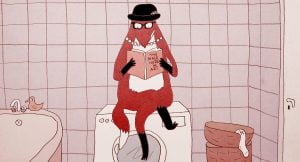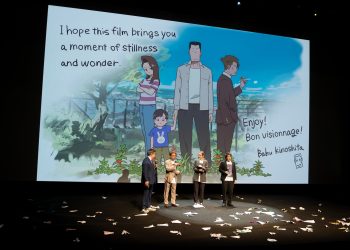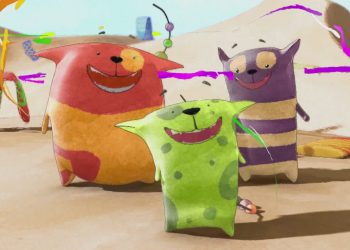Ahead of Annecy, we talked to Krešimir Zubčić, Vice-President of the Board of Animafest and editor-buyer for animated shorts and features of HRT. For the Croatian pubcaster, Zubčić is also in charge of all foreign kids and youth-orientated programming. During our chat, we touched on the network’s acquisition strategy, its production slate and the importance of international co-productions.
How would you describe HRT’s programming strategy and its target audience?
I’ve been working on a magazine programme dedicated to the art of animation for almost twelve years now, which airs every second Monday on our third channel. This gave me the opportunity to choose the best animated films from around the world. The programme covers different themes, and follows trends in animation, so my selection reflects how I’m guided by quality and diversity. I’m prepping a special episode about this year’s Oscar-nominated film Eeva by the talented Croatian-Estonian duo Lucija Mrzljak and Morten Tšinakova. This film was screened at the Berlinale, Animafest Zagreb and Annecy. The Oscar nomination put the film into the spotlight among Croatian viewers.

What kind of content are you looking for?
I’m mostly looking for authentic, bold and artsy animated content, but these aren’t my only criteria. Mainstream or commissioned films can be equally good. Many animated films for children are little masterpieces. But as the programme is broadcast in the evening, it allows me to present more diverse content.
What are the most successful animated films you’ve broadcast recently?
In February, we aired a retrospective of Oscar-winning animated films. We also showed titles shortlisted and awarded by international festivals. Every now and then, we present animated films by masters such as Paul Driessen, Joanna Quinn or Michael Dudok de Wit. And, of course, my favourite, The Gruffalo!
What are the key markets and festivals you attend?
Besides Animafest Zagreb and Annecy, I’d definitely single out the ones that introduce authors that you can hardly meet at big markets: Clermont Ferrand, Truville-sur-Mer and Aixen-Provence for shorts; and the wonderful Cartoon Forum and Cartoon Movie for series and features. And, one festival is particularly interesting because of its uniqueness – the Puppet Film Festival in Łódź. Moreover, the brand-new Animation Festival Network (AFN) is connecting festivals in the CEE region and I’m very much looking forward to following its development.
Can you elaborate on your relationship with festivals and producer?
Over the years, we’ve managed to establish some wonderful collaborations, and I’ve been able to prove that we, us buyers, are the ones who bring animation to a broader audience. For the most part, people perceive animation as something for children only. But what festivals show are productions of auteurs spanning all genres, which aim to intercept a defined audience. Although artists do not make a profit from the sale of shorts in countries such as Croatia, I believe that showing them in a place with a long-standing tradition of auteur cinema is still rewarding.
How would you judge the current state of Croatian animation?
Croatian animation has a long auteur-driven tradition. Since the inception of the Zagreb School of Animation and Dušan Vukotić’s 1962 Oscar-winning Surrogate, our style and humour are surely recognisable. I’m also happy about the new generation of animators, who represent the future of Croatian animation. Many of them are already very well-known and snagged several awards.
During each edition of Animafest, we’re delighted by how lively and diverse our domestic production is. Of course, it’s important to invest even more. We’ve excellent educational institutions, but producing is expensive. Therefore, we’re turning to international co-productions and networking [with bodies] such as the AFN.
What about the areas that need improvement?
After a long time, we started producing animated series. There were attempts after the legendary Professor Baltazar, a project that is familiar to animation fans, but what Recircle Studio achieved with Little Who Who and other animated shows gives me hope that it’s possible to do more here. I’m looking forward to the visionary, humorous series Manivald by Zagreb-based, Estonian artist Chintis Lundgren and staged by Adriatic Animation. […] The success of Diedra and Zagreb Film with Cricket & Antoinette is also a positive sign. It shows it’s still possible to assemble a good team and deliver such an ambitious project.
Read the article in the new issue of The European Animation Journal, pag. 56.






![[Annecy 25] Animating Futures: China-Europe Dialogue in the Age of AI](https://www.europeananimationjournal.com/wp-content/uploads/2025/06/cc58956f8ce791015ebea6d7abc50eaf-350x250.jpg)



![[EXCLUSIVE!] SAC 2025, Animation Beyond Borders](https://www.europeananimationjournal.com/wp-content/uploads/2025/05/image001-350x250.jpg)






